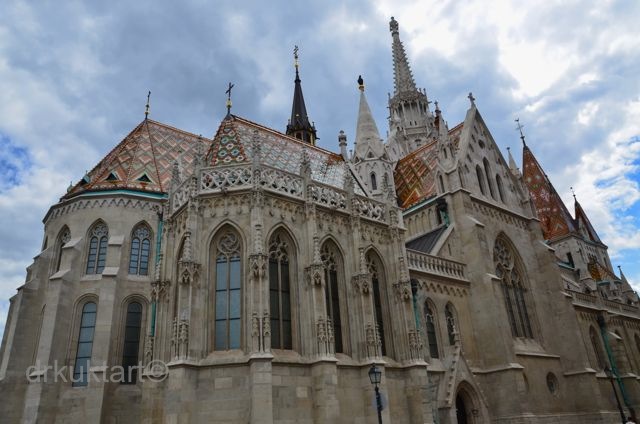
For English scroll down
Csodálatos eseményen volt alkalmunk a minap részt venni: a Budavári Mátyás templomban Antonín Dvořák Stabat Mater-ét csak nekünk - és még pár száz embernek - szólt egy amerikai kórus és felkért vokalistái, valamint egy magyar szimfonikus zenekar előadásában. Visszagondolva, mintha álmodtam volna az egészet.
We attended on a wonderful concert last Sunday in Matthias Church. The Chorus of Westerly and Duna Szimfonikus Zenekar presented Stabat Mater of Antonín Dvořák. By recollecting my memories it seems that I dreamed about this concert.
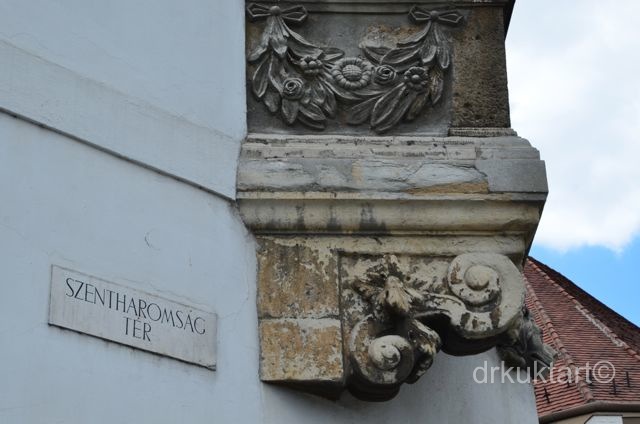
A The Chorus of Westerly 2014. évi európai koncert turnéja keretében ejtette útba Budapestet. Megtiszteltetés, ugyanis mindösszesen három városban lépnek fel Európában: Budapesten kívül Bécsben és Prágában. Ha címszavakban kéne a lényeget ismertetnem - a kórus nevén túl - ennyi lenne: Antonín Dvořák, Stabat Mater, The Chorus of Westerly, Duna Szimfonikus Zenekar, Andrew Howell, Sonja Dutoit Tengblad, Emily Marvosh, Daniel Weeks, Jeremy Galyon, Budavári Mátyás templom, Concert Masters International.
The Strabat Mater was presented on the concert tour of Europe 2014 of The Chorus of Westerly. It's a honor, because they step up only in three cities of Europe: Budapest, Vienna, Prague. Presenting my Sunday evening by entry-words: Antonín Dvořák, Stabat Mater, The Chorus of Westerly, Duna Szimfonikus Zenekar, Andrew Howell, Sonja Dutoit Tengblad, Emily Marvosh, Daniel Weeks, Jeremy Galyon, Matthias Church, Concert Masters International.
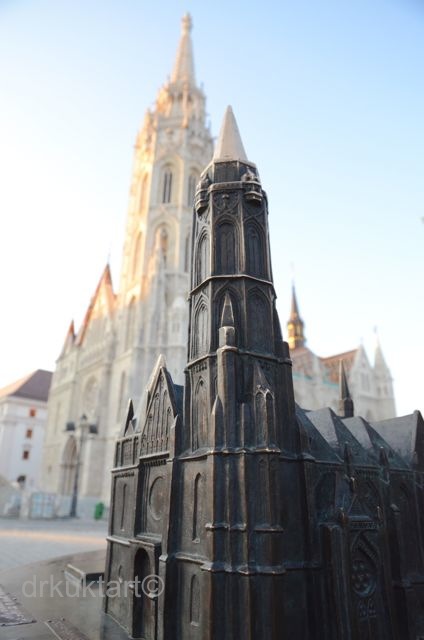
Egy kedves barát hívta fel a figyelmemet arra, hogy előregisztrációval talán bejuthatunk a vasárnapi - ingyenes (!) - előadásra, ami nem máshol, mint a Mátyás templomban kerül megrendezésre. Már maga a helyszín is felkeltette érdeklődésemet: kizárólag egy homályos, régmúltban gyökerező emlékem van a romos freskójú Mátyás templomról, illetve egy nem annyira távoli múltból eredő emlékfoszlány, miszerint - a hitéleten túl - belépőjegy fizetése mellett látogatható a templom. Ezt leszámítva csupán kívülről szemléltem a templomot, beleértve a felújítást és az éjszakai csodálatos díszkivilágítást is. A regisztrációt visszaigazoló e-mailt, annak nyomtatása követte, majd mikor húsz perccel a koncert előtt megérkeztünk, konstatáltuk, hogy a sor egészen az út másik oldaláig ér, azaz rettentő hosszú. Szerencsénkre a regisztráltakat szólították, így soronkívül bejuthattunk mi is, hogy elfoglalhassuk az előre ki nem jelölt helyünket a már bent tartózkodó több száz ember mellett.
Registration was required to attend on the concert. It was really useful because we could enter the church before other visitors who didn't register themselves on the event.
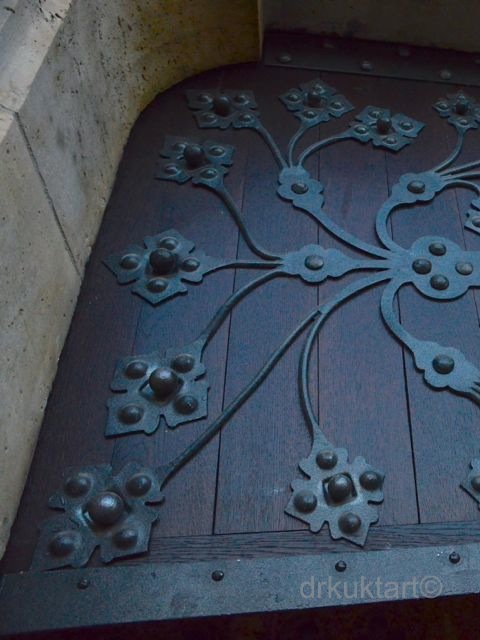
Nem rohannék annyira előre a történetben, hiszen - a számomra akkor még ismeretlen kórus mellett - a vasárnapi látogatásom elsősorban a templom vonzerejének volt köszönhető, így illik, hogy nézzük meg magunknak a helyszínt is. Ehhez a tudásanyagot a templom magyar, angol és német nyelven elérhető honlapjáról nyertem, ami - megjegyzem - szuper. A templom bemutatásánál interaktív alaprajzon klikkelgethet a látogató. Tekintettel a koncertre, mi a főhajót láttuk csak, de utólag észleltem, hogy mennyi minden rejtve maradt még előlünk. Nem volt alkalmunk megtekinteni - nemcsak a késői időpont miatt, hanem mert nem is mindegyik helyiség látogatható - többek között a Szent István (Gara-) kápolnát, a Királyi Lépcsőt és az Oratóriumot, a Máltai Lovagtermet, a Karzatfolyósót, III. Béla király sírját, a Szent-Imre kápolnát, Szent László kápolnát, a Loretói kápolnát és az altemplomot sem.
The main reason why I really wanted to attend on the concert, was the church. I haven't heard about the chorus before, so please forgive me for focusing on the building. If you've never heard about this church then give me a few minutes and read about its history and building below. I found many interesting information on the website of the Matthias church which is available in Hungarian, German and English languages. The concert was in the church hall, so that was the only part of the church what we visited. Nevertheless the church has many beautiful other rooms and places: example the St Steven (Gara) chapel, the royal staircase and oratory, the Maltese Knight Chamber, the loft hallway (Béla chambers), the tomb of King Béla III (1172-96), the Saint Imre chapel, the St. László chapel, the Loreto chapel and the undercroft.
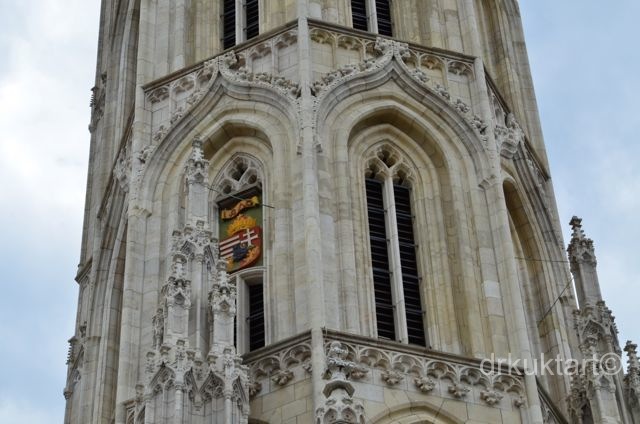
"A hármas tagolású, reprezentatív nyugati homlokzaton a jól hangsúlyozott középpont ellenére Mátyás ötszintes déli harangtornya uralkodik. A második szint hatalmas, gótikus rózsaablakát a XIX. század végi nagy átépítéskor Schulek Frigyes szabadította ki a barokk kori elfalazásból: az előkerült töredékekből rekonstruálni tudta a karéjos kőrács eredeti formáit."
'Despite the strong emphasis on the middle line, the impressive tripartite west facade is dominated by the five-storied Matthias bell tower. This gives the impression that architectural structures are becoming the more monumental as we look from the short, turreted Béla tower through the ornamented central area and to the south tower. The huge Gothic rosette on the second floor had been covered with a wall in the Baroque ages, and was only revealed during the major reconstruction by Frigyes Schulek in the end of the 19th century: he managed to reconstruct the original shapes of the stone grid from the fractions found.'
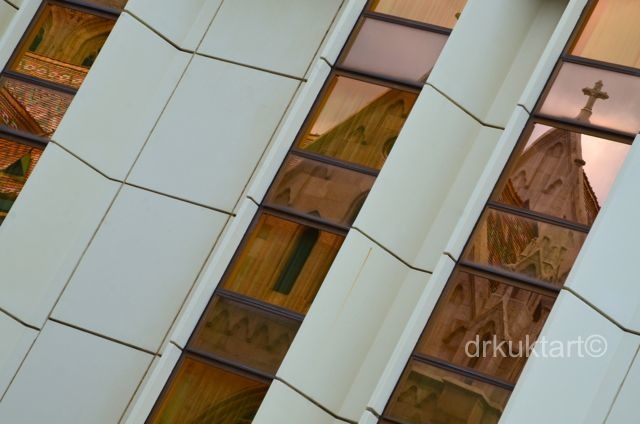
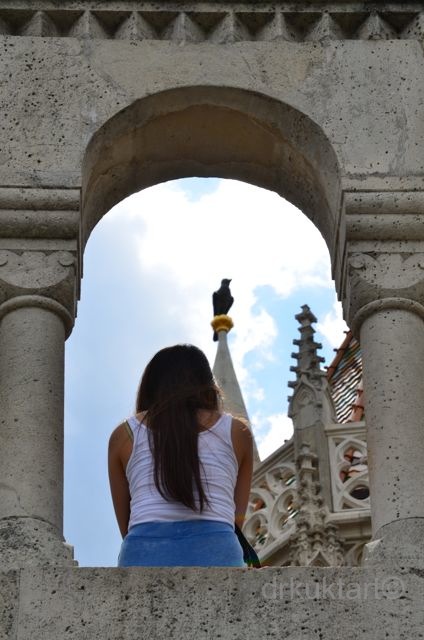
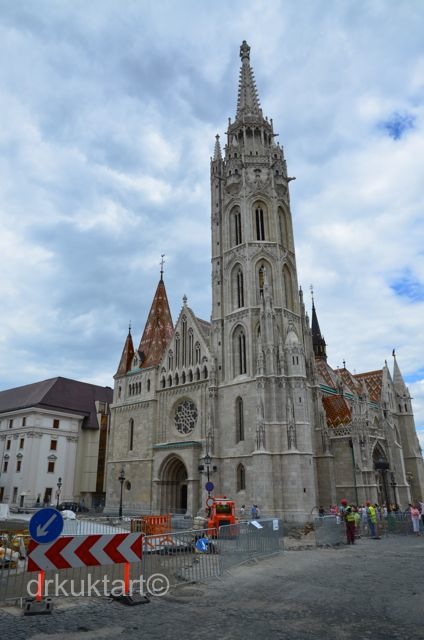
A templom körül folyamatos a "felfordulás", jelenleg a Szentháromság teret szépítik. "A hagyomány szerint 1015-ben Szent István megalapítja az első Mária-templomot. A török kor után a templomot Szent István egyházaként emlegetik, 1915-ben pedig megülik alapításának 900. évfordulóját. (…) valószínű, hogy a Gellért-legenda ezt az épületet említi, mint Pesth minor (a középkorban Buda neve) Mária-egyházát, ahol Szent Gellért püspök holttestét 1046-ban - a ma is nevét viselő hegyen történt meggyilkolása után - felravatalozták és ideiglenesen eltemették."
'Saint Steven founded the first Church of Mary. The related tradition, which was generally accepted until the 20th century, was public belief in the Middle Ages. After the period of Turkish rule, the church was known as the Church of Saint Steven, and the 900th anniversary of its foundation was celebrated in 1915. (…) it is quite probable that this building is mentioned in the legend of Gellért as the Church of Mary in "Pesth minor" (the name of Buda in the Middle Ages), where Saint Gellért bishop's body lay and was buried temporarily, after he had been killed on the hill named after him, in 1046.'

A Mátyás templom tükörképe a Budapest Hilton épületének üvegfelületein.
Reflection of Matthias church on the building of Budapest Hilton.
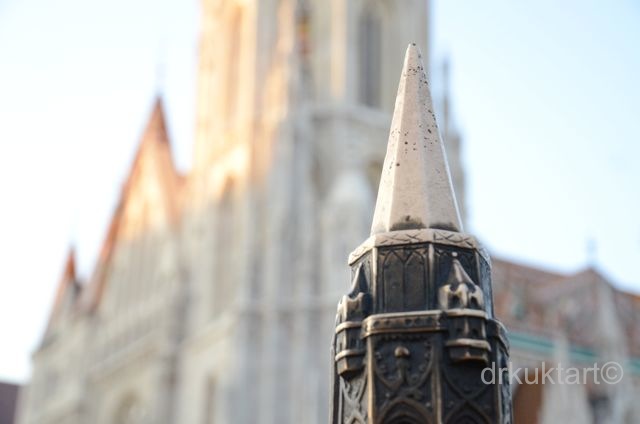
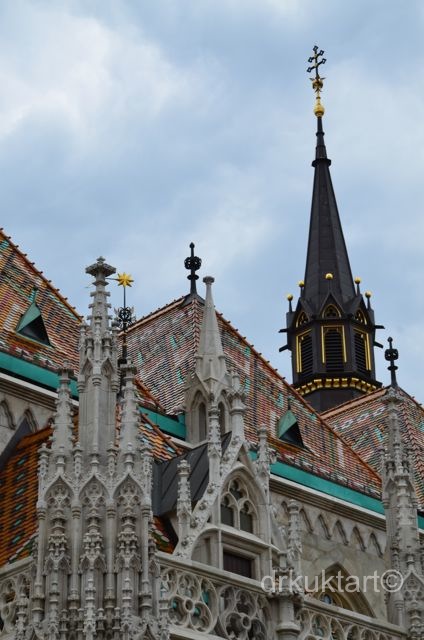
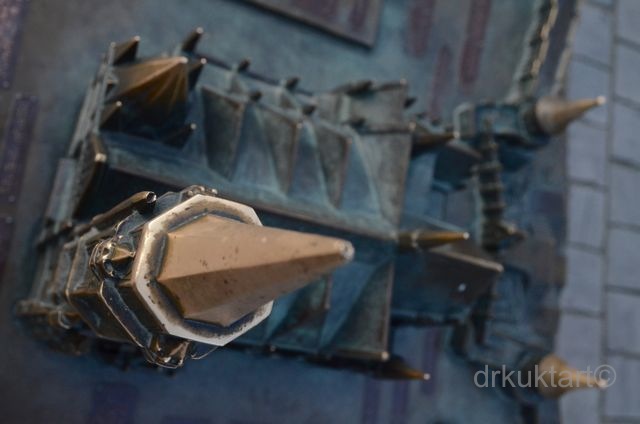

"A belépő látogatóra a tágas csarnoktér teszi az első benyomást, amely Nagy Lajos király XIV. századi építkezései alatt alakult ki. Az oldalhajók boltozatát ekkor emelték meg a főhajó magasságáig. Ekkor helyezték el a királyi pár arcmását őrző oszlopfőt is a Mária-kapu belső oldalán. A nyugat-európai gótikához szokott látogató számára szokatlan sajátosság a templombelső színes, rendkívüli formagazdagságú díszítőfestése is: olyan jelenség, amely csak a Nyugat és a Kelet határmezsgyéjén alakulhatott ki. Az épület belseje a megtalált maradványok tanúsága szerint a középkorban is festve volt, mégpedig nem csupán alakos freskókkal, hanem indás és mértani motívumokból álló, kárpitszerű díszítőfestéssel is. E felfedezés hatására Székely Bertalan, a kor vezető festőművésze és Schulek Frigyes építész a XIX. század végén alkották meg ezt az egyedülálló belső világot. Munkájuk alapjául az eredeti minták mellett az ősmagyar, indás motívumkincs szolgált, áthatva a korszak szecessziós stílusától. E sajátos keveredés eredménye ez a magas színvonalú és sajátosan magyar szecesszió, amely markánsan különbözik a stílus nyugati képviselőitől."
'Entering the church you are instantly impressed by the wide hall area, which was created during the building works by King Louis the Great in the 14th century. Arches of the side aisles were raised up to the level of the main aisle at that time, and a column head with the portraits of the royal couple was also put up, on the inner side of the Mary Gate. Visitors accustomed to the Gothic style characteristic for Western Europe may find the interior ornamental painting and the richness of its shapes and colours unusual: this is a phenomenon which could only emerge at the borderline of West and East. Preserved remains showed that the church had been painted in the Middle Ages, and not only with figures but with a carpet-like ornamental painting with geometrical and tendril patterns. These finding led to the creation of this unique interior by Bertalan Székely, leading painter at the time, and Frigyes Schulek, architect at the end of the 19th century. Besides the samples found, their work was based on the ancient Hungarian tendril patterns and the contemporary secession style. This unique mixture resulted into a sophisticated and characteristically Hungarian secession, markedly different from representatives of the western secession.'
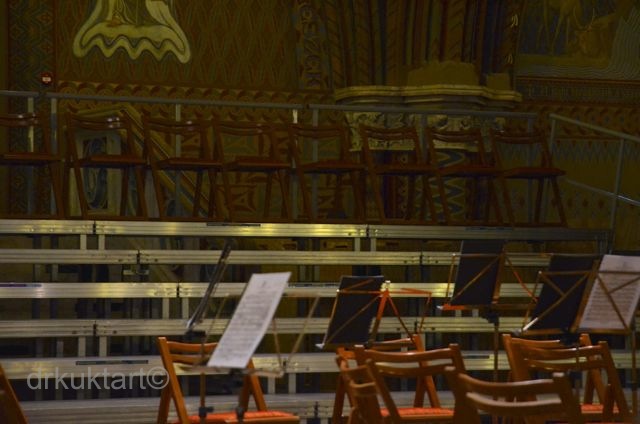
S mit illik tudni a kórusról? A kezünkbe nyomott tájékoztató füzet értelmében az 55 éve alapított The Chorus of Westerly-t speciális összetétele teszi különleessé: az Amerikai Egyesült Államokban ők az egyetlen olyan énekkar, amelynek előadásai során minden alkalommal együtt énekel a fiatalabb és az idősebb korosztály. "A fiatalok a felnőttekkel egyenrangú kórustagnak számítanak és azokkal azonosan magas színvonalon énekelnek. (…) Bár az énekkar tagjai amatőr státuszúak, de a professzionalizmusra való törekvés minden koncertjükön megmutatkozik annak köszönhetően, hogy a felnőtt énekesek túlnyomó többsége külön egyéni hangképzésben is részesül. A hangversenyszezon elején a gyerekek kórustáborozáson vesznek részt."
A few words about the chorus. According to the leaflet which was provided to us in the church: The Chorus of Westerly was founded 55 years ago. 'The Chorus membership is one of the reasons the organization is so special. The Chorus of Westerly is presently the only independent choral organization in the US that combines adults and children in all performances throughout the entire concert season. Children are members of equal rank with the adults and are held to the very same high standards. (…) While the Chorus membership is made up of volunteer singers, the professional orientation of the Chorus is apparent in each and every event. The vast majority of the adult singers have received voice training. The children of the Chorus spend extra time before the season at a special chorus camp.'
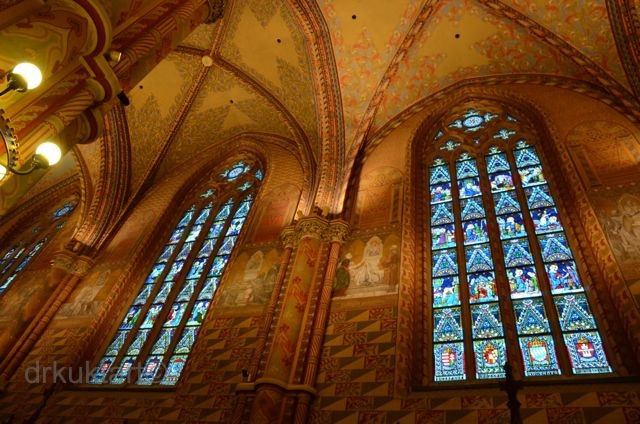
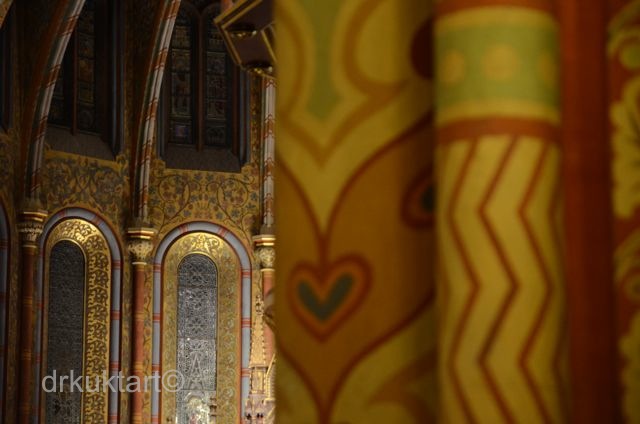
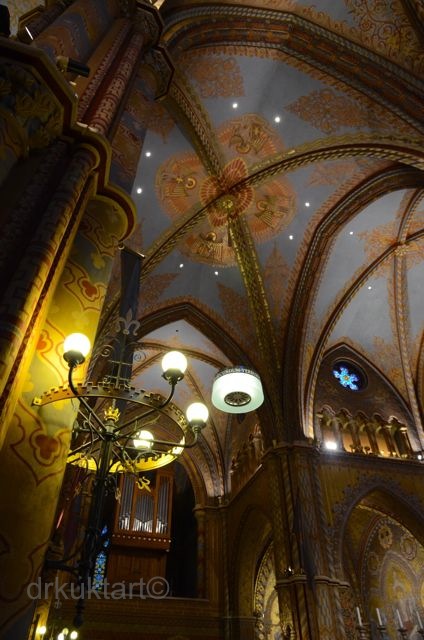
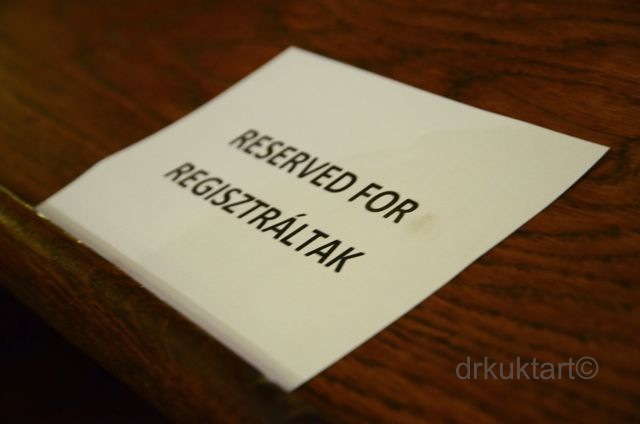
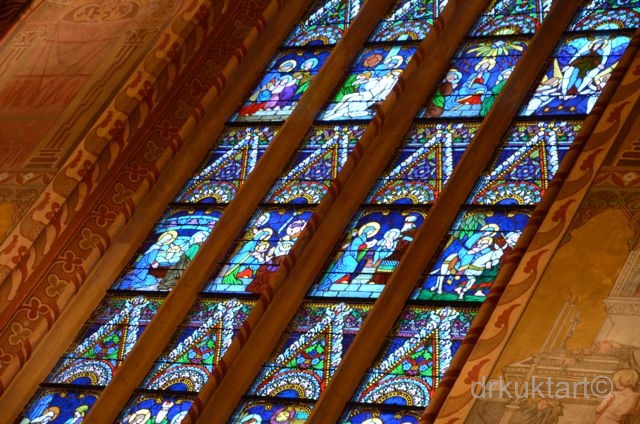
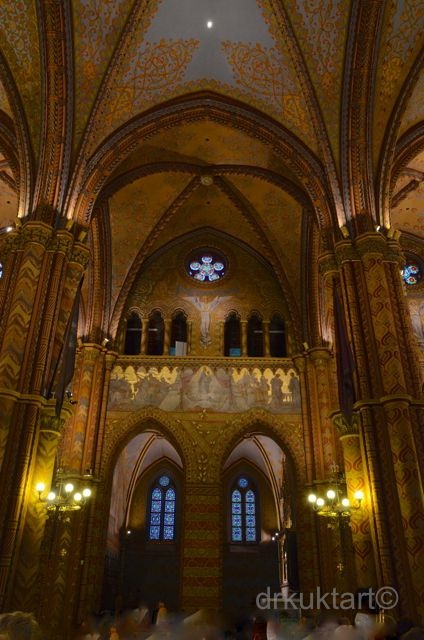
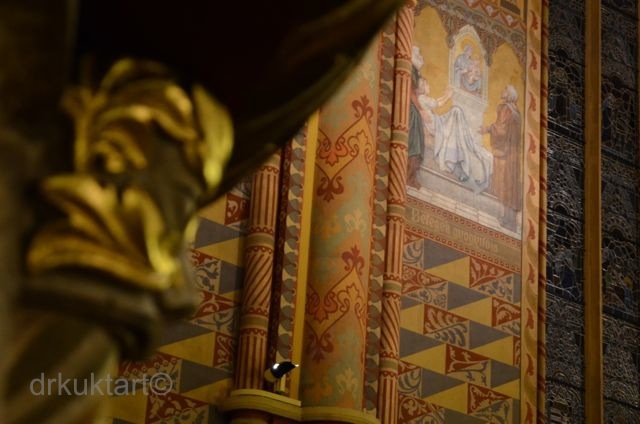
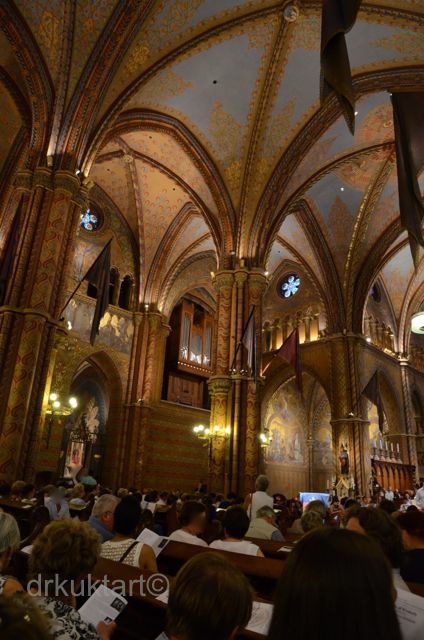
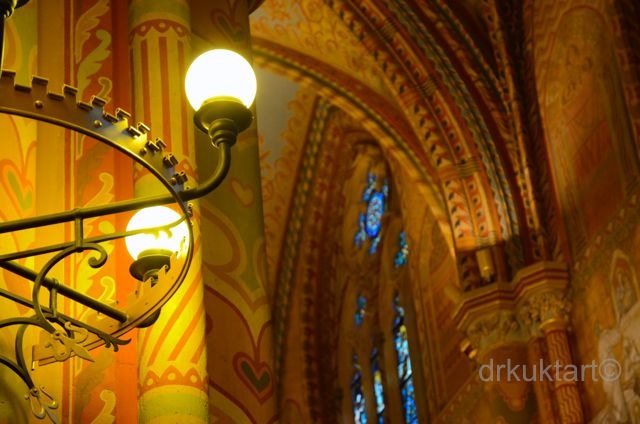
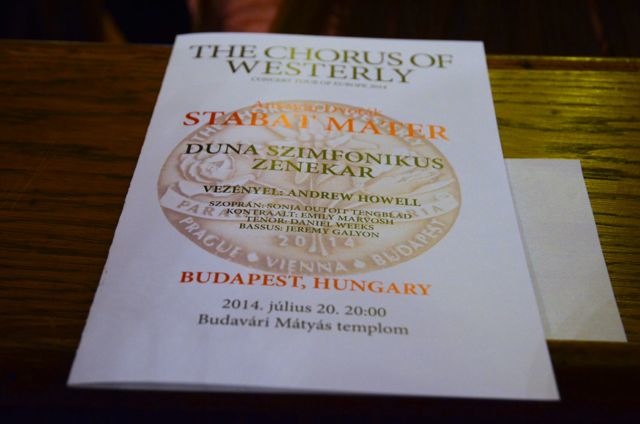
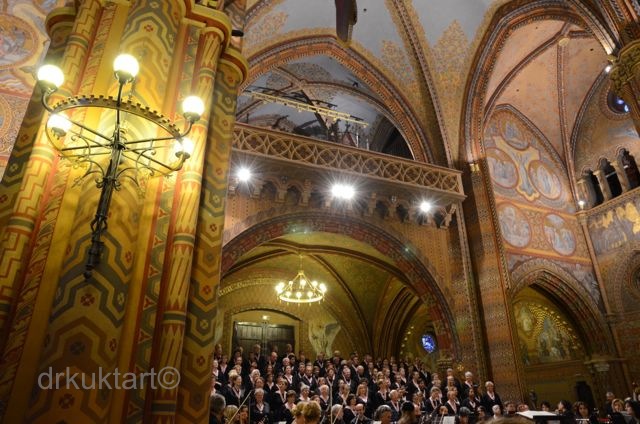
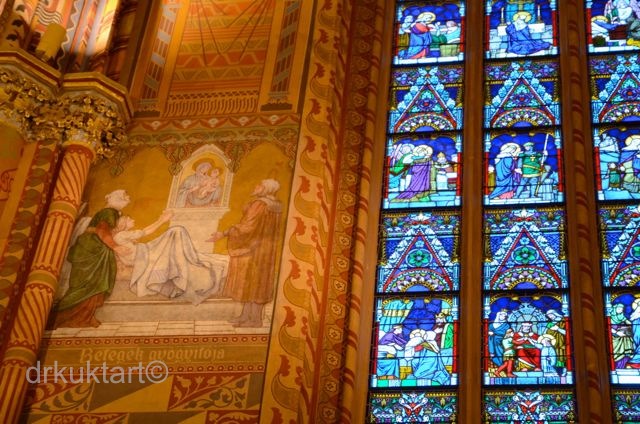
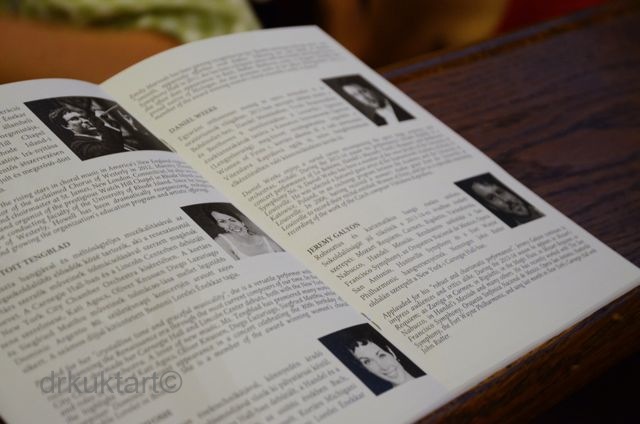
Andrew Howell vezényelt, aki 2012-ben vette át a kórus művészeti irányítását. A szoprán Sonja Dutoit Tengblad, a kontraalt Emily Marvosh, a tenor Daniel Weeks, míg a basszus Jeremy Galyon volt.
The orchestra and the chorus were conducted by Andrew Howell who is the appointed music director of the Chorus since 2012. The treble singer was Sonja Dutoit Tengblad, the contralto singer was Emily Marvosh, the tenor was Daniel Weeks, and the bass singer was Jeremy Galyon.
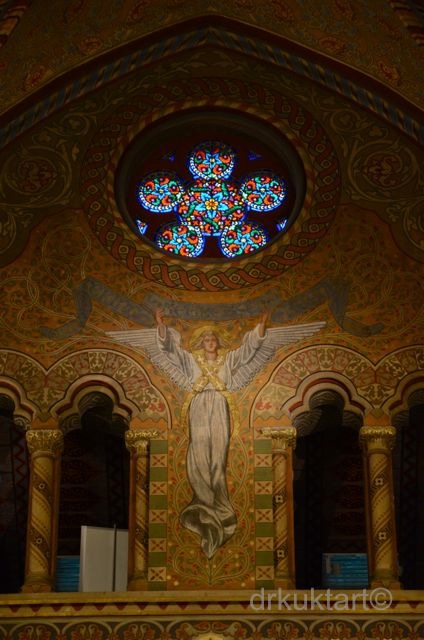
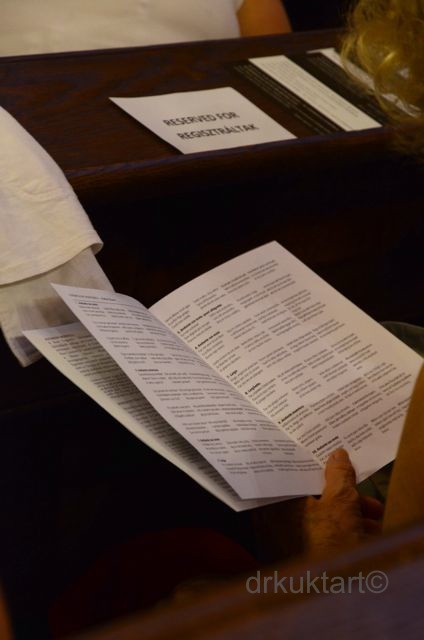

Elsöprő erejű dallamok, kóristák, s vokalisták kiváló előadása, latin nyelvezet, széles skálán mozgó hangterjedelem, bravúros zenekari kíséret és mindehhez méltó környezet repített minket több száz évvel korábbi érába vissza. S bár a padsorok tömve voltak, s eleinte a sok izgő-mozgó, tereferélő ember miatt meleg is volt - ami egy templomban számomra több, mint szokatlan dolog - az előadás kezdetével a külvilág ezen része kizárult. Vitathatatlan tény, hogy valónkkal adott térben, s időben voltunk, mindemellett emlékként kizárólag a zene által előidézett fennkölt érzést és a falfestmények által életre keltett jópár képkocka maradt meg.
Poignant tunes, excellent presentation of the chorus and the vocalists, Latin language, perfect play of the orchestra and beautiful surrounding were leading us back to more centuries earlier.
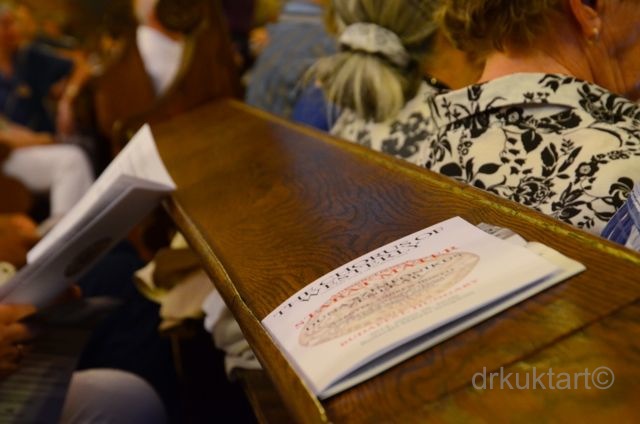
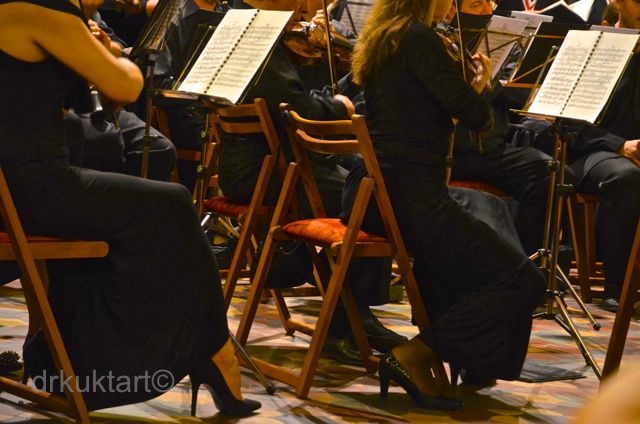
A Duna Szimfonikus Zenekar (honlapja szerint) "1961-ben alakult Budapesten. (…) A zenekar a Belváros szívében található patinás Duna Palota rezidens együttese (…) Gyakori vendégek a Zeneakadémián, Budai Vigadóban, a Stefánia Palotában, a Kongresszusi Központban és a Művészetek Palotájába is többször meghívást kaptak.(…) Külföldi vendégszerepléseiken az önálló hangversenyeken túlmenően közreműködtek nemzetközi versenyek kísérőzenekaraként, szcenikus operettelőadásokon, balettprodukciókban, valamint operett gálákon és oratórium-hangversenyeken. Rendszeresen fellépnek Németországban, Franciaországban, Svájcban, Hollandiában és Olaszországban."
The Hungarian Duna Szimfonikus Zenekar was founded in 1961. This orchestra is the resident orchestra of Duna Palace (Duna Palota) which is located in the downtown of Budapest. They step up independently and as an accompaniment in Hungary and abroad (Germany, France, Switzerland, the Netherlands, Italy) as well.
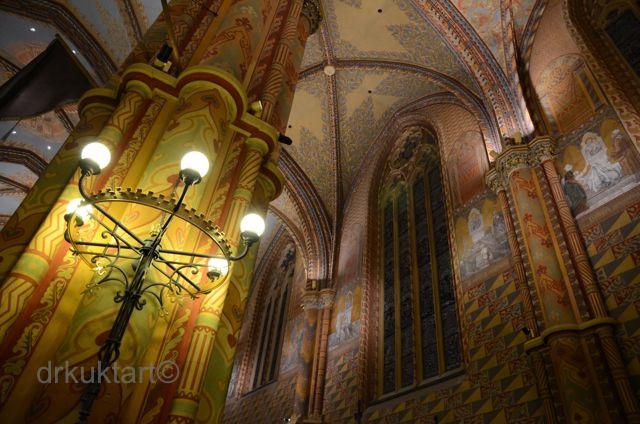
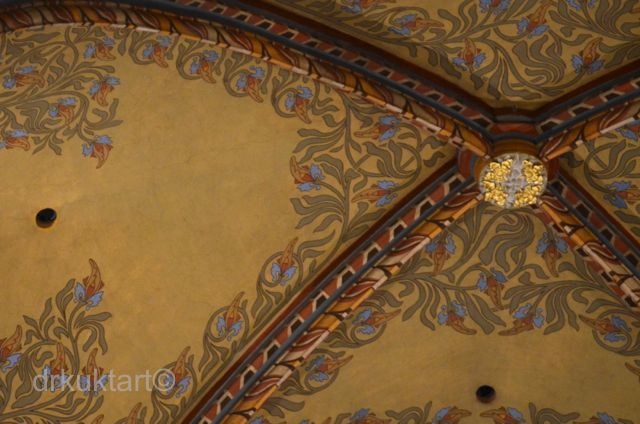
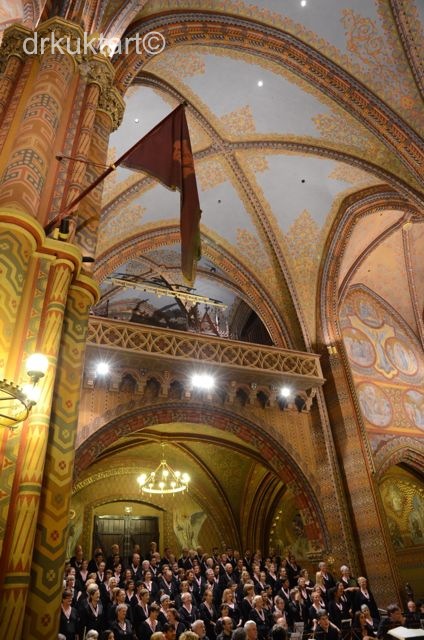
A Stabat Mater himnusz, amely Szűz Máriának a keresztfa mellett átélt fájdalmáról szól, egyike a legismertebb középkori énekeknek. (…) A himnusz címe az első sorából adódik: Stabat mater dolorosa (szó szerinti fordításban: „Állt a fájdalommal terhes anya”). A himnuszt több zeneszerző, többek között Antonín Dvořák is megzenésítette.
''Stabat Mater Dolorosa, often referred to as Stabat Mater, is a 13th-century Catholic hymn to Mary (...) It is about the Sorrows of Mary.The title of the sorrowful hymn is an incipit of the first line, Stabat mater dolorosa ("The sorrowful mother stood"). Stabat Mater (...) for soli, choir and orchestra is a religious cantata by the Czech composer Antonín Dvořák based on the text of the Stabat Mater. The work was sketched in 1876 and completed in 1877. The composing of the cantata was Dvořák's reaction to the death of his daughter, Josefa. (…) He returned to the final stylisation of the composition in 1877, when his two surviving children died within a short time of each other. (…) Stabat Mater is Dvořák's first work on a religious theme. It is divided into ten individual parts; only the first and the last part are thematically connected. The first performance took place on 23 December 1880 at the concert of the Jednota umělců hudebních (Association of Musical Artists) in Prague.'
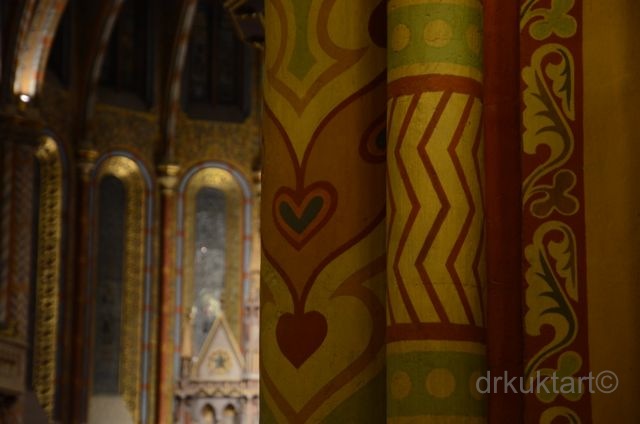
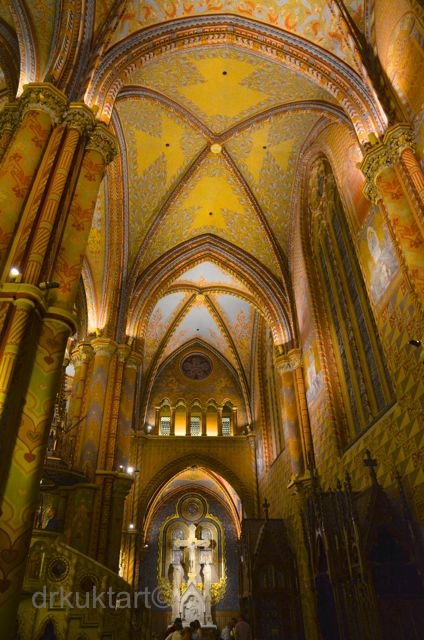
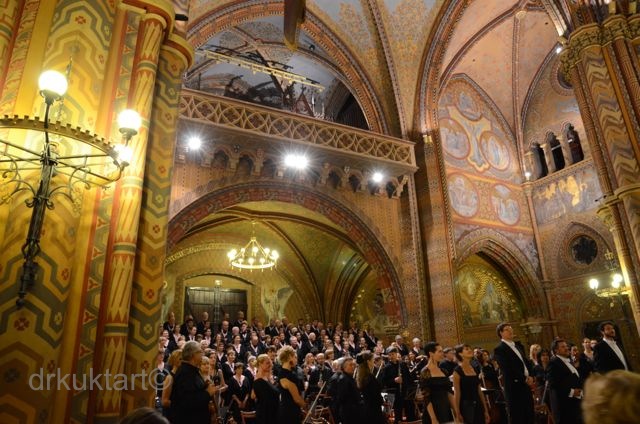
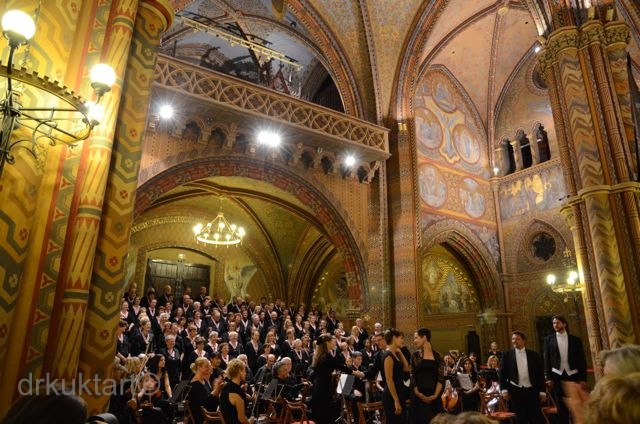
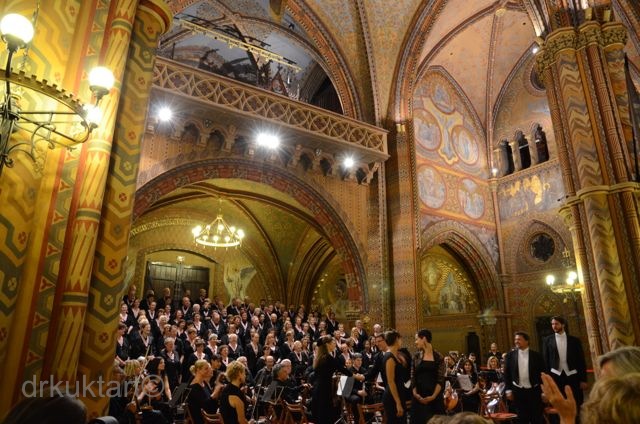
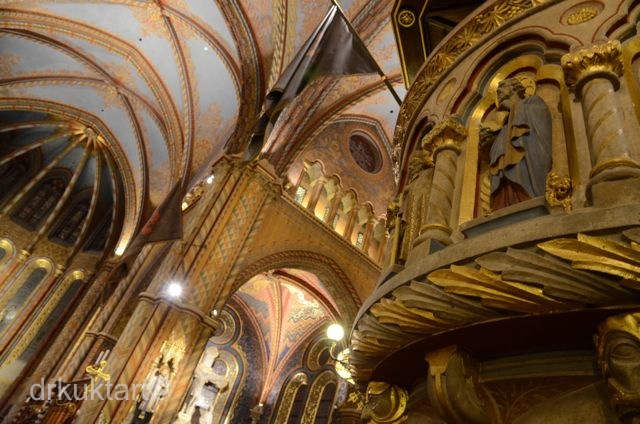
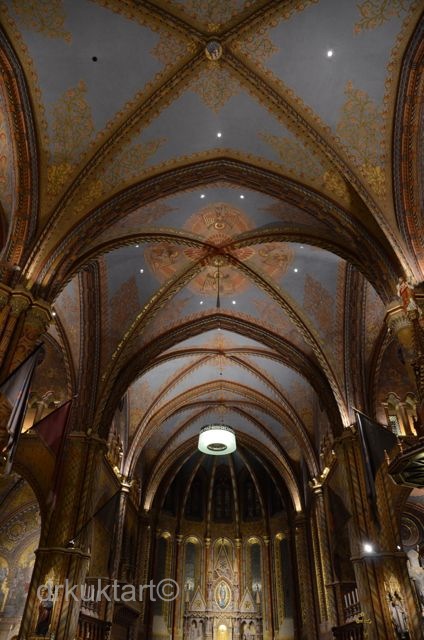
"A tizennégyszög hét oldalával záródó főszentély központjában Schulek Frigyes koragót stílusjegyeket hordozó oltára áll. A tabernákulum fölött a szintén Schulek-féle feszület, annak két oldalán Mária életének két jelenete látható: bemutatása a jeruzsálemi templomban és a Szentlélek eljövetele Pünkösdkor. Az oltár fölső részét a Nagyboldogasszony sugárkoszorúban lebegő, megkoronázott alakja uralja: a Magyarok Nagyasszonyát II. János Pál pápa engedélyével és áldásával 2000. augusztus 15-én koronázták meg a Szent Korona másolatával, amelyet a templom hívei gyalogosan hoztak Rómából. A Boldogasszonyt övező sugárkoszorún átsejlik a Krisztus-ablak Megváltó-képe, szemléltetve a hit ősi szabályát: per Mariam ad Iesum Márián keresztül Jézushoz jutunk."
'In the middle of the main chancel, which is a tetradecagon with seven closed sides, Frigyes Schulek created an altar with early Gothic features. Above the tabernaculum there is a cross also created by Schulek, two scenes from the life of Mary on the sides: her introduction at the church of Jerusalem and the visit of the Holy Spirit at Pentecost. The higher section of the altar is dominated by Our Lady with the crown, floating in a wreath of light: on 15th August 2000 the Lady of Hungarians was crowned with a duplicate of the sacred crown, with the Pope's approval and blessing, brought on foot from Rome by members of the church community. Through the wreath of light around Our Lady a vague image of the Saviour on the Christ window, illustrating the ancient rule of religion: "per Mariam ad Iesum" - through Mary to Jesus.'
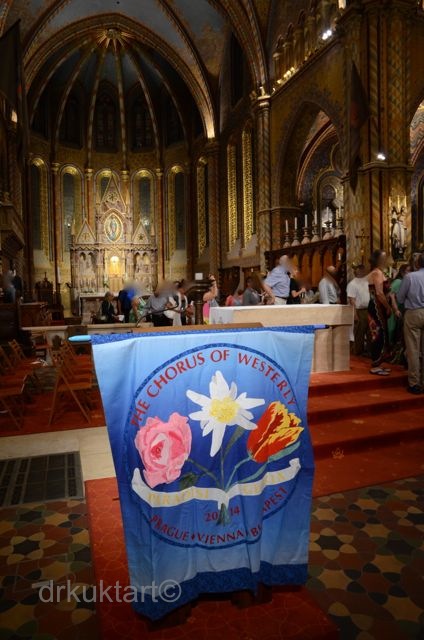
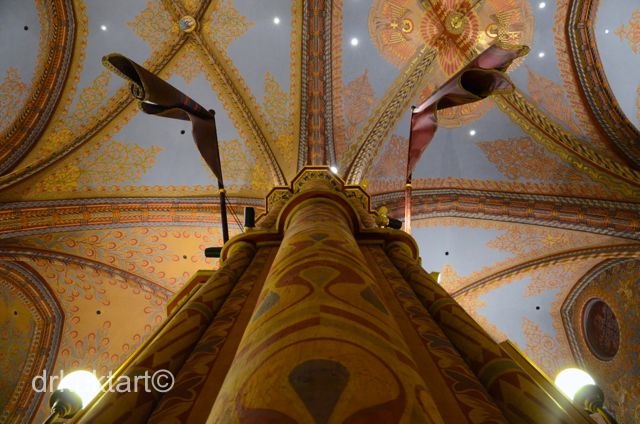
"A főhajó képéhez hozzátartoznak a templom oszlopain függő zászlók, amelyeket Ferenc József koronázására hoztak Budára a tartományok képviselői. A szentély ívének déli oszlopán látjuk az országzászlót, az északin Erdély zászlaját, majd sorra a Szent Korona országainak lobogóit, amelyek közül Trianon óta egyik sem tartozik Magyarországhoz. E zászlók ma azt üzenik: ez a templom nem csupán a határok közé zárt Magyarországnak kíván szíve lenni, hanem az egész magyarságnak, amelyet Szent István a Korona képében az Istenszülő tulajdonába adott."
'The view of the main aisle is complete with the banners hanging on the columns of the church, brought to Buda by representatives of the counties for the coronation of Francis Joseph. The country's flag is on the south column of the chancel arch, the Transylvanian flag is on the north column, and further on the countries of the Sacred Crown, neither of which is part of Hungary any more since Trianon. The message of these banners: the church does not want to be the heart of only Hungary within the borders, but the heart of all Hungarians given to the Mother of God in the form of the Sacred Crown.'
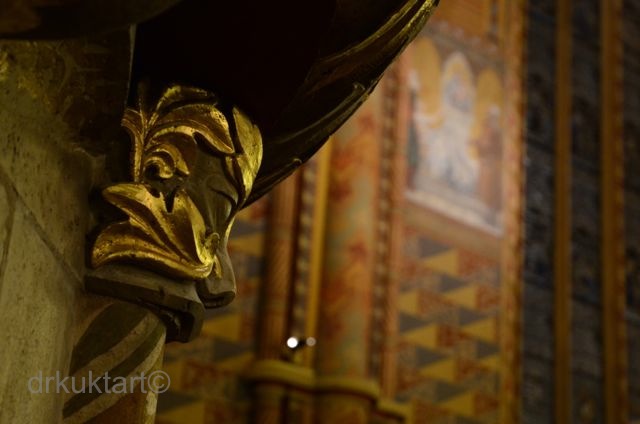
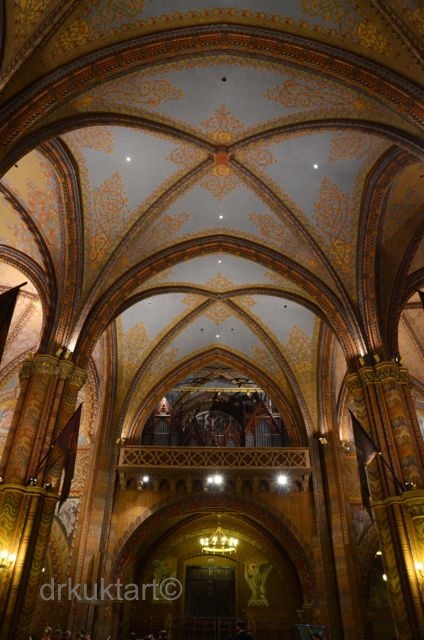
"1982-83-ban (…) a Rieger-Kloss orgonagyár jägerndorfi (Krnov, Csehszlovákia) üzemében felújítják, teljes lebontása után újjáépítik a templom orgonáját, amelyet 1984. január 25-én szentel fel Dr. Lékai László bíboros-prímás. Az új (…) hangszeren azóta a liturgikus használat mellett évente 80-90 koncertet adnak."
'In 1982-83 the church organ was renovated, first completely taken apart and then reassembled (…) in the Jägerndorf (Krnov, Czechoslovakia) workshop of the Rieger-Kloss organ factory. The renovated organ was sanctified on 25th January 1984 by Cardinal-Primate László Lékai dr. The new (…) instrument (...) is still used in 80-90 concerts every year, besides regular liturgical use.'
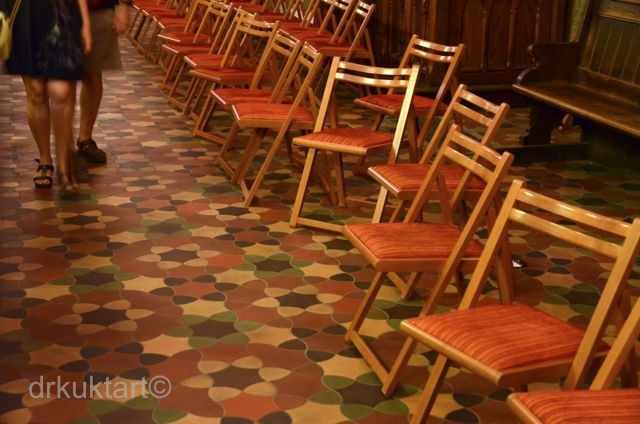
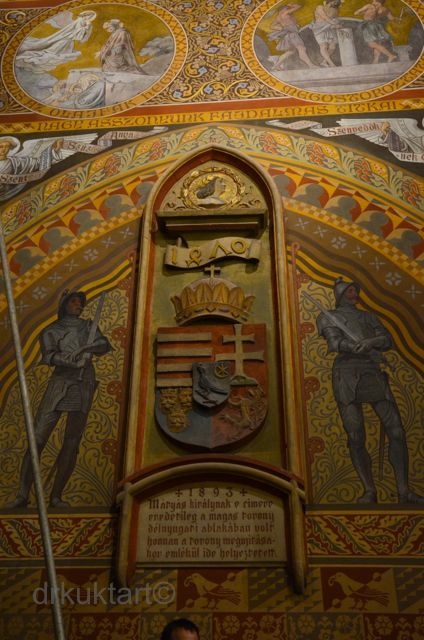
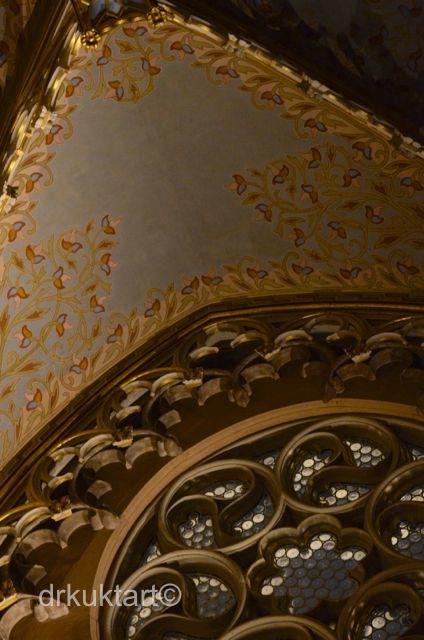
A templom turisztikai céllal a következő időpontokban látogatható a honlap szerint: hétköznap 9.00-17.00, szombaton 9.00-12.00, vasárnap 13.00-17.00.
The church is opened for tourists: weekdays 9.00-17.00, Saturdays 9.00-12.00, Sundays 13.00-17.00. For more information about the guided tours, fees and visiting rules click here.
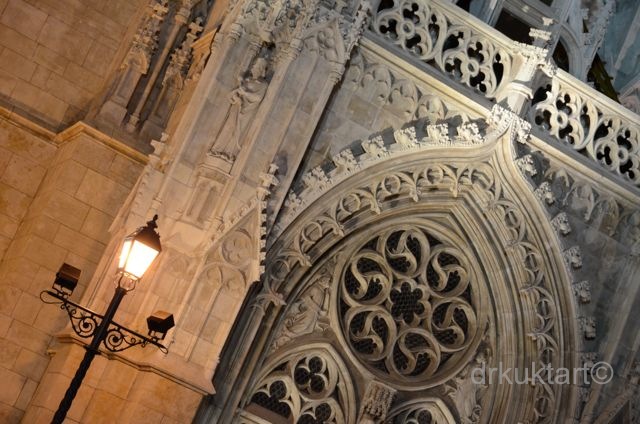
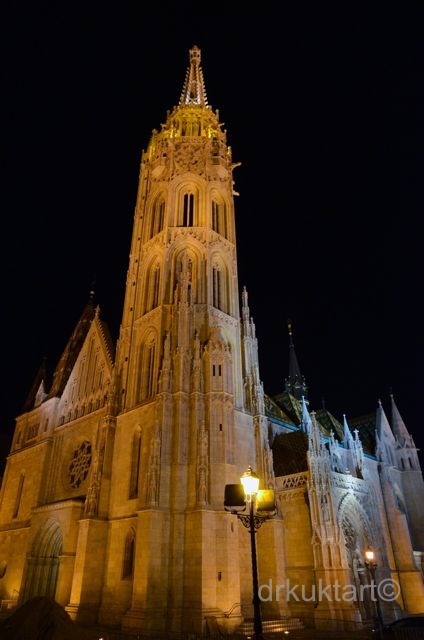
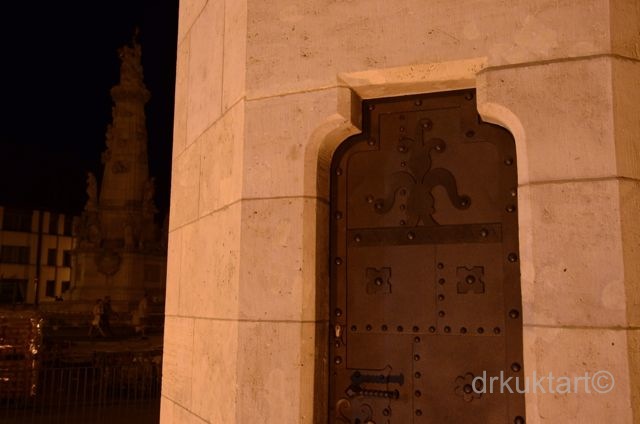
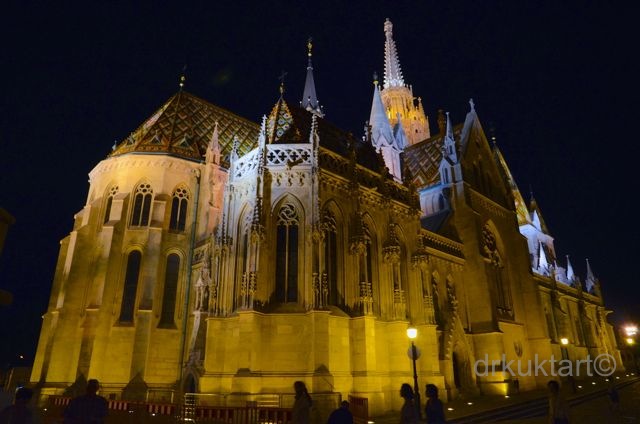
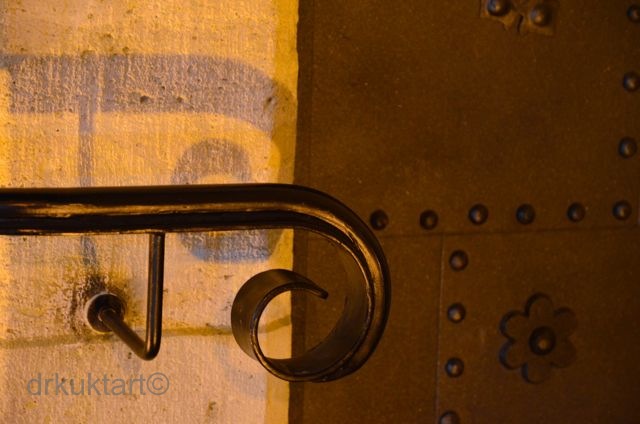
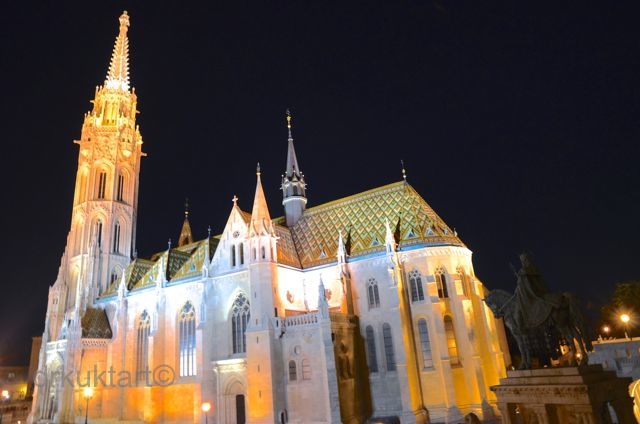
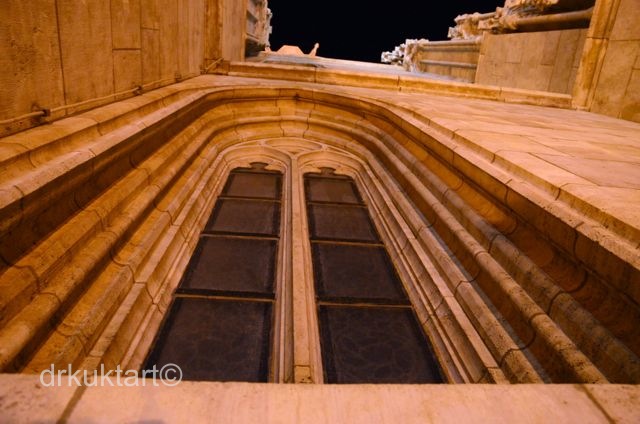
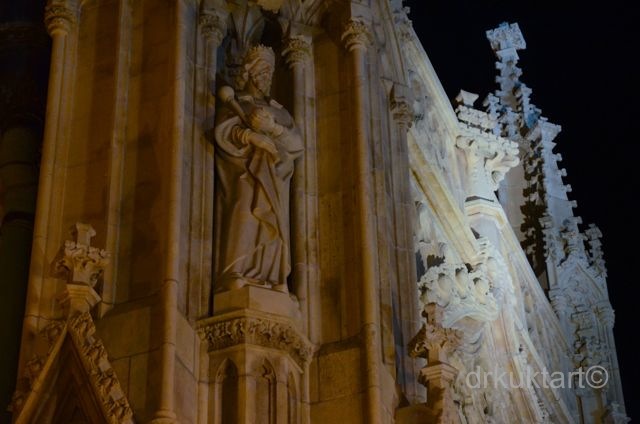
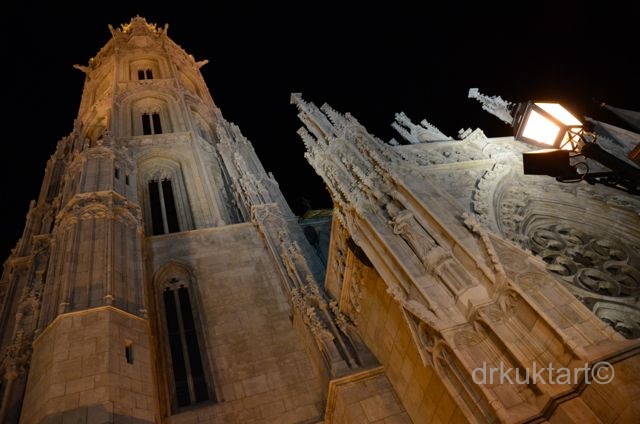
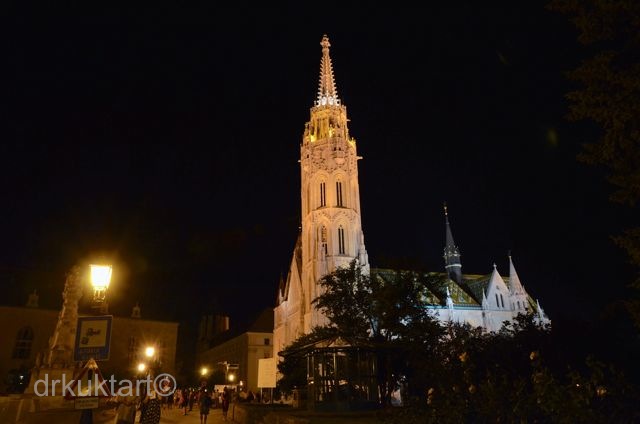
S utoljára, de nem utolsó sorban szeretném megemlíteni a Concert Masters International-t (avagy a CMI-t), amelyen keresztül mi is regisztrálhattunk, s amely 1993-as alapítása óta (honlapja szerint) mára az egyik vezető koncert turné szervezővé vált. Itt szeretném felhívni a figyelmet arra, hogy a CMI által osztogatott szórólap szerint e hét szerdán (2014. július 23.) 19.30-kor a Szent István Bazilikában a Metropolitan Flute Orchestra (USA) többek között Bach, Mozart, Beethoven, Liszt, Chabrier és Long műveit adja elő fuvolazenekari feldolgozásban Paige Dashner Long vezényletével, ingyenes belépéssel. Ha tehetitek, menjetek el! A magam részéről köszönöm ezt a csodálatos vasárnap esti élményt mind a templomnak, mind a résztvevőknek!
Ha tetszett a bejegyzés, kövess Facebook-on ITT és Instagram-on ITT.
Jó napot kívánok!
Last but not least I want to mention the Concert Masters International (or CMI) through what we could register ourselves to this Sunday night event. According to their website the CMI was established in 1993 and has become the leading concert tour operator in Hungary. I also want to call your attention that the Metropolitan Flure Orchestra from the US gives flute concert (Bach, Mozart, Beethoven, Liszt, Chabrier, Long conducted by Paige Dashner Long) in Saint Stephen's Basilica this Wednesday (at 19.30 p.m. on 23 July, 2014 according to the leaflet which was provided by CMI). The entrance if free of charge. I just want to say thank everybody (including the church and all participants) for this wonderful program last Sunday evening!
If you like this post, follow me on Facebook HERE or Instagram HERE.
Have a nice day!
DRKUKTA




